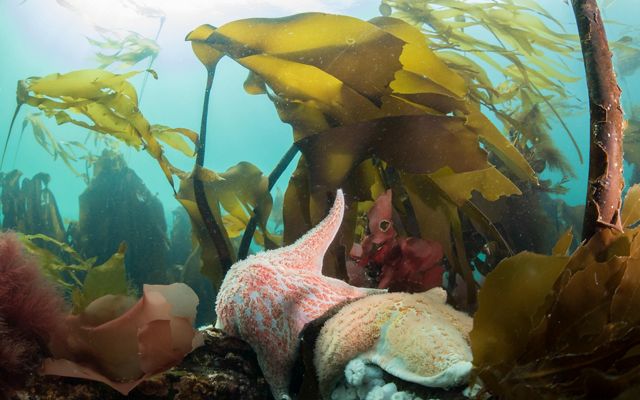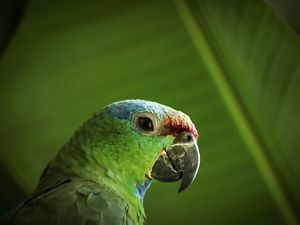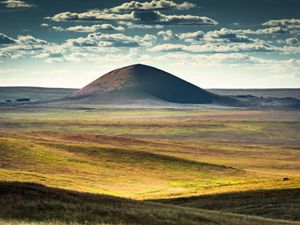Great Bear Sea PFP Agreement Creates New Pathway for Indigenous-Led, Collaborative Conservation
$335 million raised for First Nations co-management and coastal economies, with support from The Nature Conservancy
Media Contacts
-
Jacqueline Nunes
Phone: +1 416 526-7353
Email: jacqueline.nunes@natureunited.ca
The completion of the Great Bear Sea Project Finance for Permanence (PFP) realizes decades of vision and collaboration to create a co-governed model for conservation that will protect a globally significant marine ecosystem and benefit coastal communities.
The Great Bear Sea PFP is led by 17 First Nations in partnership with the Government of Canada and the Province of British Columbia (BC). It is a model for durable, long-term financing that will bring $335 million in new investment to coastal BC to support community-led economic development and diversification, long-term funding for Indigenous Guardian programs, and stewardship and management, including in Marine Protected Areas (MPAs). These investments will be leveraged to deliver an estimated $750 million over the next 20 years to conserve one of the richest and most productive cold-water marine ecosystems on Earth, while bolstering sustainable marine-based economies and creating thousands of jobs.
Quote: Christine Smith-Martin and Merv Child

The Great Bear Sea PFP flows from our Nations’ governance and stewardship responsibilities that date back tens of thousands of years. The PFP also reflects our commitment to collaborative approaches that bring all parties to the table.
“The landmark achievement of the Great Bear Sea agreements should be celebrated as one that advances conservation, and also one that demonstrates the potential of collaboration and respect. This initiative realizes decades of vision by the First Nations and the support of the federal and provincial governments,” says Hadley Archer, Executive Director of The Nature Conservancy's Canada Program (Nature United). “Our organization is proud to have supported all of the governance partners towards this significant outcome for Indigenous-led, co-governed stewardship and large-scale financing that will benefit lands, waters and people forever.”
“The Great Bear Sea PFP flows from our Nations’ governance and stewardship responsibilities that date back tens of thousands of years. The PFP also reflects our commitment to collaborative approaches that bring all parties to the table, and we very much appreciate the partners that have worked in support of our Nations for many years,” says Christine Smith-Martin, CEO of Coastal First Nations, and Merv Child, Executive Director of Nanwakolas Council, also the co-chairs of the Great Bear Sea PFP.
“This includes The Nature Conservancy championing this initiative on the global stage and providing extensive policy, technical, and financial support here in Canada. We are proud of our work together to establish the Great Bear Sea as a world-leading model of Indigenous-led conservation.”

The Great Bear Sea (also known as the Northern Shelf Bioregion) covers two-thirds of the coast of BC, from northern Vancouver Island to the Alaska border. These waters support a globally rare and productive mix of habitats — open ocean, vibrant estuaries, dense kelp forests, expansive coral and sponge beds, and deep fjords. Stewarded by First Nations for tens of thousands of years, the Great Bear Sea is a source of sustenance, culture and livelihoods for all who call the coast home.
The Great Bear Sea PFP will support a network of MPAs that will designate levels of conservation and permissible activities. Leaders shared and endorsed the MPA Network Action Plan in February 2023 at the IMPAC5 marine conservation summit, after more than a decade of development by First Nations in partnership with the Canadian federal and provincial governments, industry stakeholders and communities.
Quote: Jenny Brown
Indigenous knowledge and science inform the action plan, which is a world-leading precedent that truly reflects the interconnectedness between nature and people, as well as the value of integrating different knowledge systems to enrich how globally significant landscapes are protected and managed.
“A network of marine protected areas creates a whole-ecosystem approach to conservation in the Great Bear Sea that will protect its rich biodiversity, enhance its climate resilience and support community well-being,” says Jenny Brown, Conservation Director, The Nature Conservancy's Canada Program. “Indigenous knowledge and science inform the action plan, which is a world-leading precedent that truly reflects the interconnectedness between nature and people, as well as the value of integrating different knowledge systems to enrich how globally significant landscapes are protected and managed.”
The Great Bear Sea borders the Great Bear Rainforest, where the world’s first PFP was created nearly 20 years ago. The Great Bear Rainforest Agreements have demonstrated the potential of this funding model, catalyzing a massive shift in forest management, creating 1,292 new, permanent jobs and 18 Guardian Watchmen programs, and nearly tripling the initial investment, resulting in $418.8 million invested to date.
Expected outcomes for the Great Bear Sea PFP include an estimated 3,000 new jobs and 32,000 days of skills training, while the MPA network aims to conserve up to 84 species at risk and restore key fish stocks.
The Nature Conservancy recognizes the many donors that have contributed to this achievement through visionary and long-term investment, in particular the foundations that supported the First Nations’ efforts to develop and deliver a finance strategy through the Donor Council. This milestone also reflects the commitments of local, provincial and national conservation organizations.
“This historic initiative is an acknowledgement that long-term, collaborative conservation is the way forward to safeguard our ecosystems and economies,” says Jennifer Morris, CEO of The Nature Conservancy and the chair of Enduring Earth, a groundbreaking collaboration between The Nature Conservancy, The Pew Charitable Trusts, World Wildlife Fund, and ZOMALAB that works with all stewards of the environment to accelerate conservation worldwide. The Great Bear Sea PFP is part of Enduring Earth’s global network of PFPs.
“Canada is showing the world that ambitious goals for people and nature can be achieved when we work together.”
The Nature Conservancy is a global conservation organization dedicated to conserving the lands and waters on which all life depends. Guided by science, we create innovative, on-the-ground solutions to our world’s toughest challenges so that nature and people can thrive together. We are tackling climate change, conserving lands, waters and oceans at an unprecedented scale, providing food and water sustainably and helping make cities more sustainable. The Nature Conservancy is working to make a lasting difference around the world in 77 countries and territories (41 by direct conservation impact and 36 through partners) through a collaborative approach that engages local communities, governments, the private sector, and other partners. To learn more, visit nature.org or follow @nature_press on X.



